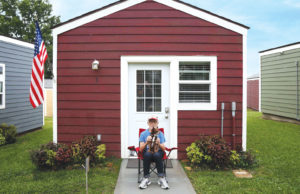As the president and congressional titans prepare to meet Thursday on one of the most pressing issues of the day, the
and legislative leaders are enmeshed in rolling rounds of diplomacy
about exactly how the high-stakes meeting will unfold. And no detail is
too trivial.
In face-to-face meetings in the Capitol, participants have been discussing the arrangement of tables: U-shaped or square?
Will everyone be able to fit? That has been a sticking point. A Republican aide said the
had planned to restrict the table to only the handful of officially
invited guests, which would have forced some other senators to sit with
staff at what the aide indignantly referred to as “the kiddie table.”
“We’re not going to have members (of
There’s still the matter of where to sit. Should
Democrats and Republicans sit separately? Or in a show of bipartisan
comity, should their seats be intermingled? That question still is not
settled.
With a national television audience watching and a
major domestic initiative hanging in the balance, logistics are proving
to be almost as delicate as negotiations on the issue itself.
“Shades of the
Toward the end of the Vietnam War, diplomats spent weeks in
arguing over what they called “the modalities” of peace talks. That is,
the shape of the table and the placement of chairs — issues they
considered fraught with symbolism.
In
For President
summit is a chance to revive a health care bill that has languished
since the Democrats lost their filibuster-proof majority in the
At minimum, the
on an equal footing at the summit. The party especially hopes to avoid
a repeat of the recent House GOP meeting in
Word came from the
“The
Many points still are being negotiated, but the shape of the meeting is coming into focus. The
and will be divided into four parts: Cost control, deficit reduction,
expansion of coverage and overhaul of the insurance system.
An hour will be set aside for each topic. A buffet lunch break of 30 to 45 minutes is the only intermission.
Obama will give an opening statement of five to seven minutes; Republicans will get a chance to respond.
Expect a free-wheeling discussion, with Obama playing the role of moderator.
Even so, Republicans aren’t happy about the location. Obama chose
The meeting is in a 1,600-square-foot room — small
for the occasion. About four dozen lawmakers and staff will attend, not
including the media. Republicans say the room will be needlessly
cramped.
Privately,
“We pointed out that the venue shouldn’t drive the
summit. The summit should drive the venue,” said a Republican aide,
speaking on condition of anonymity. “If the room limits the ability to
have a discussion, then move. But they (the
—
(c) 2010, Tribune Co.
Distributed by McClatchy-Tribune Information Services.














